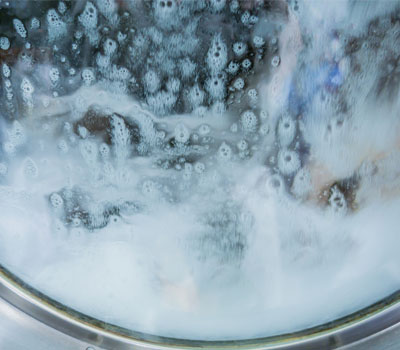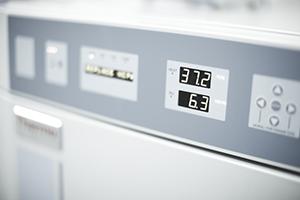Medical refrigeration is a topic that any hospital, pharmacy or medical facility must take seriously. The same applies to care homes, which handle…
Choosing the right washing machine to meet hygiene standards
By Clare Long, Business Account Manager at the Professional division of Miele
Choosing the right washing machine for your care home plays a key role in ensuring infection control guidelines are successfully met. But it’s difficult to know where to start when it comes to choosing the right make and model.
Washing bed linen, towels and residents’ clothing is a daily chore for care home staff. As care and nursing environments have a particularly high risk of disease spreading, such as urinary tract infections and influenza, it’s vital that managers choose a washing machine equipped to handle heavily soiled items. For example, models which offer sluice washes carry out a pre-wash cycle that removes solid particles from heavily soiled items and allows the contaminated water to pass through, before adding detergent and carrying out the main wash.
The Department of Health’s Health Technical Memorandum 01-04 (HTM 01-04), is a set of infection control guidelines that care and nursing organisations must abide by. It states that to decontaminate linen it should be washed at 65°Cfor at least ten minutes, 71°C for at least three minutes or 85°C for one minute. If care home managers choose commercial washing machines that offer thermal disinfection  cycles, they can meet these guidelines and help prevent the spread of infection. Laundry operators can ensure that these temperatures are met using an independent validation system, NeQis, which can be fitted to the machine and reports on the temperatures that have been reached. This information can be sent to a computer owned by the care home, allowing staff to accurately monitor temperatures to record compliance.
cycles, they can meet these guidelines and help prevent the spread of infection. Laundry operators can ensure that these temperatures are met using an independent validation system, NeQis, which can be fitted to the machine and reports on the temperatures that have been reached. This information can be sent to a computer owned by the care home, allowing staff to accurately monitor temperatures to record compliance.
Barrier Washers are another type of washing equipment that care homes should consider in order to control infection effectively. These machines feature a ‘dirty side’ and a ‘clean side.’ Laundry operators put dirty laundry in the machine in one room, before washing their hands and leaving the room, and then taking the clean laundry out of the other side of the machine in another room. This reduces the risk of the laundry being contaminated. They are particularly beneficial when washing bed linen, which can easily get infected due to incontinent residents. Even if it isn’t feasible to install barrier washers on-site, designing a care home laundry room to include a ‘dirty’ and ‘clean’ side can help improve the laundry operation and further reduce the chance of cross-contamination.
A care home will only be as hygienic and free from infection as its appliances allow. If managers consider the full features of commercial washing machines prior to making a choice, they can ensure that they select a machine that can meet their specialised needs.


